The Cape Fear River is a richly diverse and fascinating natural resource situated in North Carolina, renowned for its unique recreational opportunities, including fishing. This river and its surrounding region offer a myriad of species for both the novice and the experienced angler. In this comprehensive guide, we’ll delve into the intricacies of fishing in the Cape Fear River region, providing key insights that will deepen your understanding and improve your fishing experiences.
You will learn about the prevalent fish species in the area, the best fishing spots, the right fishing techniques, legal requirements, and the environmental considerations that are crucial to sustainable fishing. We will also explore the socio-economic impact of fishing in the region and how it contributes to the local communities.
To support our discussion, we’ll present data from various research studies, expert opinions, and statistical evidence. By the end of this article, you’ll have a robust understanding of fishing in the Cape Fear River region that will help you become a more informed and responsible angler, and perhaps even inspire you to explore this amazing river yourself.
Table of Contents
- Fish Species in Cape Fear River
- Prime Fishing Locations
- Fishing Techniques and Tactics
- Licenses, Regulations, and Sustainability
- Socio-Economic Impact of Fishing
- Final Thoughts
- Resources
Fish Species in Cape Fear River
The Cape Fear River boasts a remarkable diversity of fish species, making it a vibrant ecosystem and an angler’s paradise. From largemouth bass to striped bass, shad, and catfish, the Cape Fear River region provides a wide array of angling opportunities. In this section, we’ll delve into the prevalent fish species found in the river, their behavior, and the ideal seasons for catching each.
Largemouth Bass
One of the top predators in the Cape Fear River system, the Largemouth Bass, is a popular catch among local and visiting anglers. These fish are renowned for their aggressive strikes and acrobatic fights, making them a thrilling catch. They can be found in various habitats, from backwater creeks to main channel margins, and typically feed on smaller fish, crayfish, and aquatic insects.
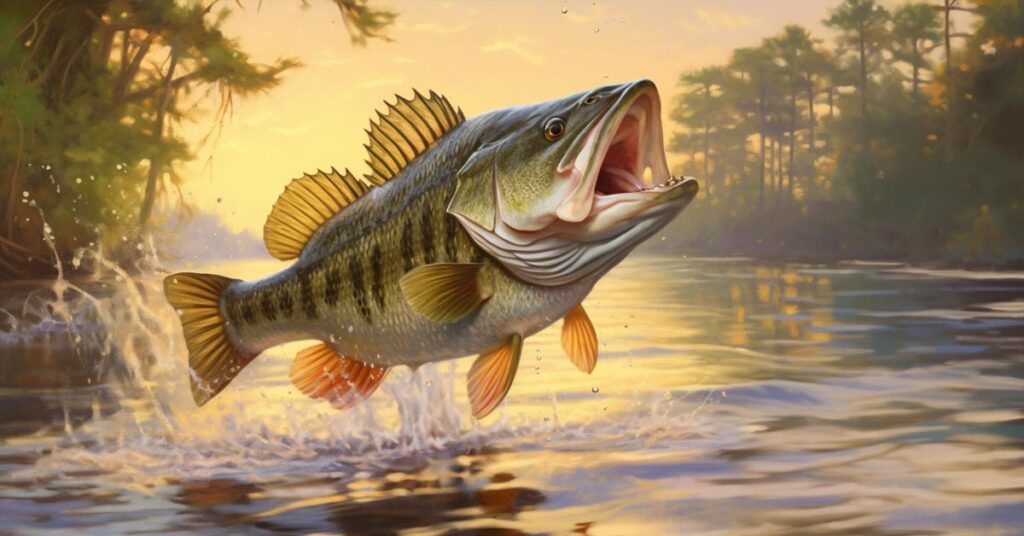
Striped-Bass
The Cape Fear River is home to a robust population of Striped Bass, making it a popular destination for bass anglers. Striped Bass, also known as “rockfish,” are typically found in the deeper waters of the main river channel, especially near rock structures, drop-offs, and submerged debris. They primarily feed on shad and other small fish. The best time to fish for Striped Bass is during their spring spawning run, typically between March and May.
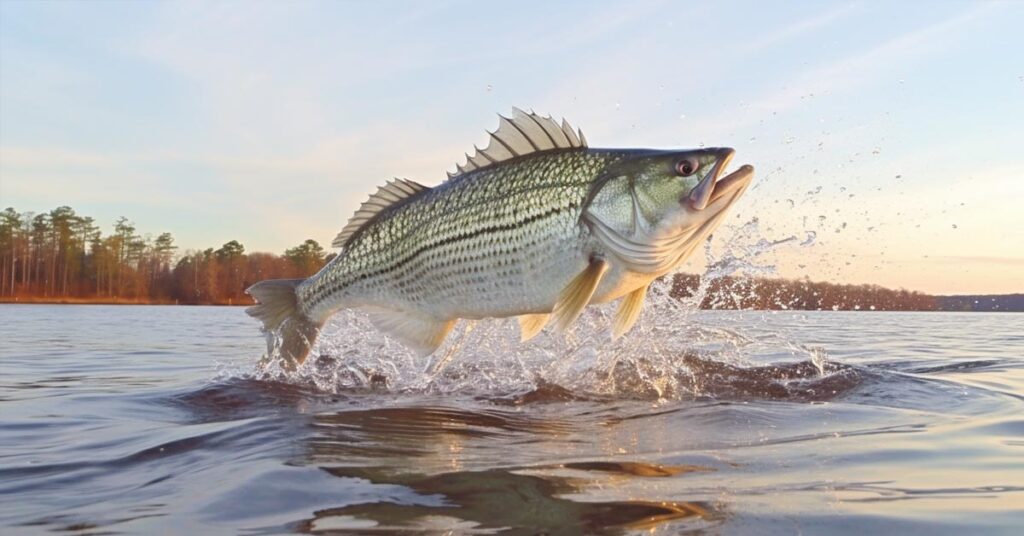
Shad
The American and Hickory Shad are anadromous fish species, meaning they live in the ocean but return to freshwater rivers to spawn. The Cape Fear River is one of their significant spawning grounds. The shad run usually begins in late February and extends into May, with the peak usually occurring in mid-April. Shad fishing is particularly popular due to the challenge they provide on light tackle.
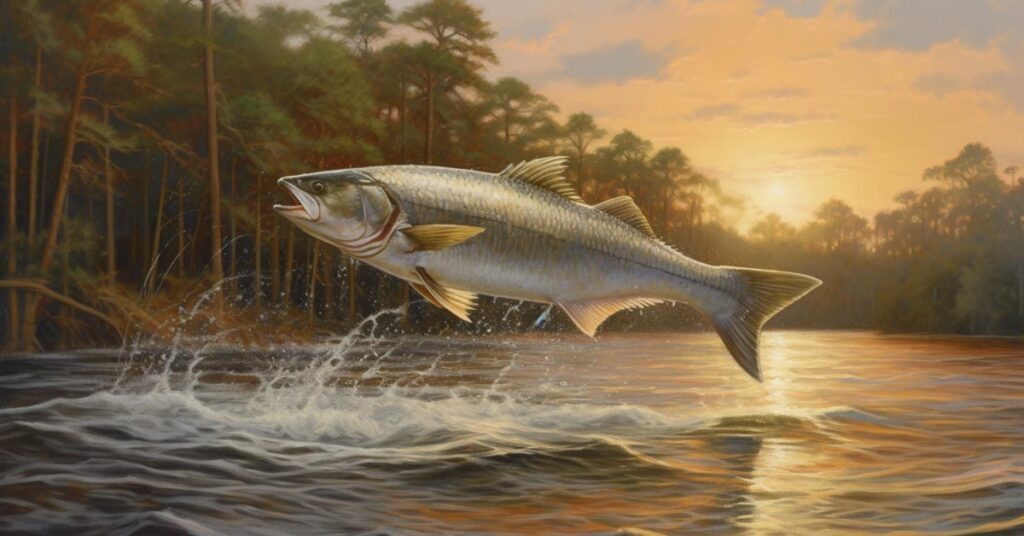
Catfish
The Cape Fear River contains several species of catfish, including the Channel Catfish, Blue Catfish, and Flathead Catfish. These species are bottom-dwellers that feed on a variety of prey, making them an excellent option for bait fishing. They are available year-round, but night fishing during the warmer months tends to be most productive.
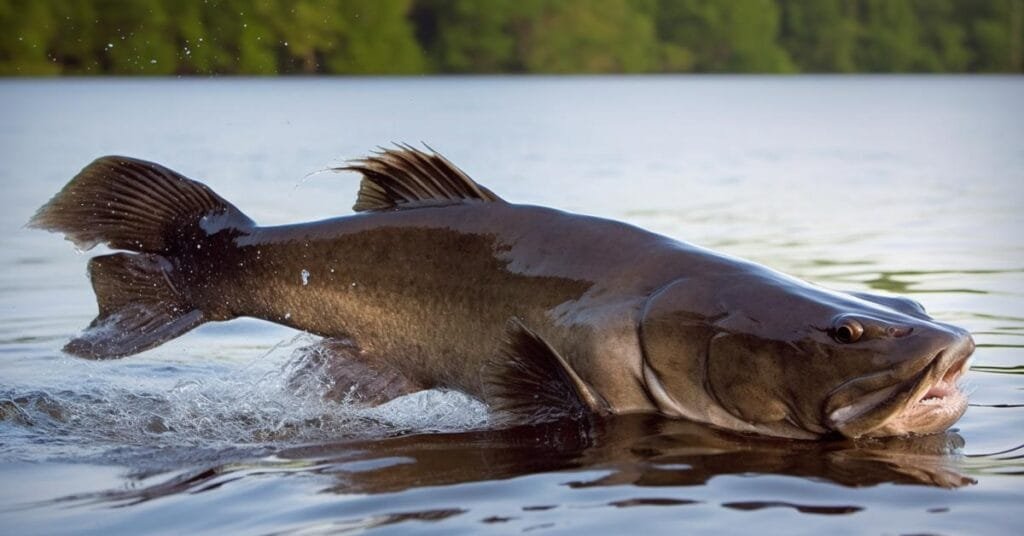
Sunfish
The Cape Fear River hosts several sunfish species, such as Bluegill and Redbreast Sunfish. These small, aggressive fish can provide a lot of fun, especially for novice anglers and children. They are available throughout the year and can be found in nearly every type of water within the Cape Fear River system.

Understanding the behavior and preferences of each of these species can significantly improve your success when fishing in the Cape Fear River. In the following sections, we will explore where to find these fish within the Cape Fear River region and the best tactics for catching each species.
Prime Fishing Locations
Given the Cape Fear River’s length and diverse ecosystems, several locations are particularly popular among anglers due to their abundance of fish and their accessibility. Below are some of the prime fishing spots along the Cape Fear River:
Lock and Dam 1
Located near Riegelwood, North Carolina, Lock and Dam 1 is a popular fishing spot, particularly during the shad and striped bass runs in the spring. Fish are attracted to this area due to the increased oxygen and food supply caused by the churning water. Accessible bank fishing and boat ramps make this an excellent spot for anglers of all types.
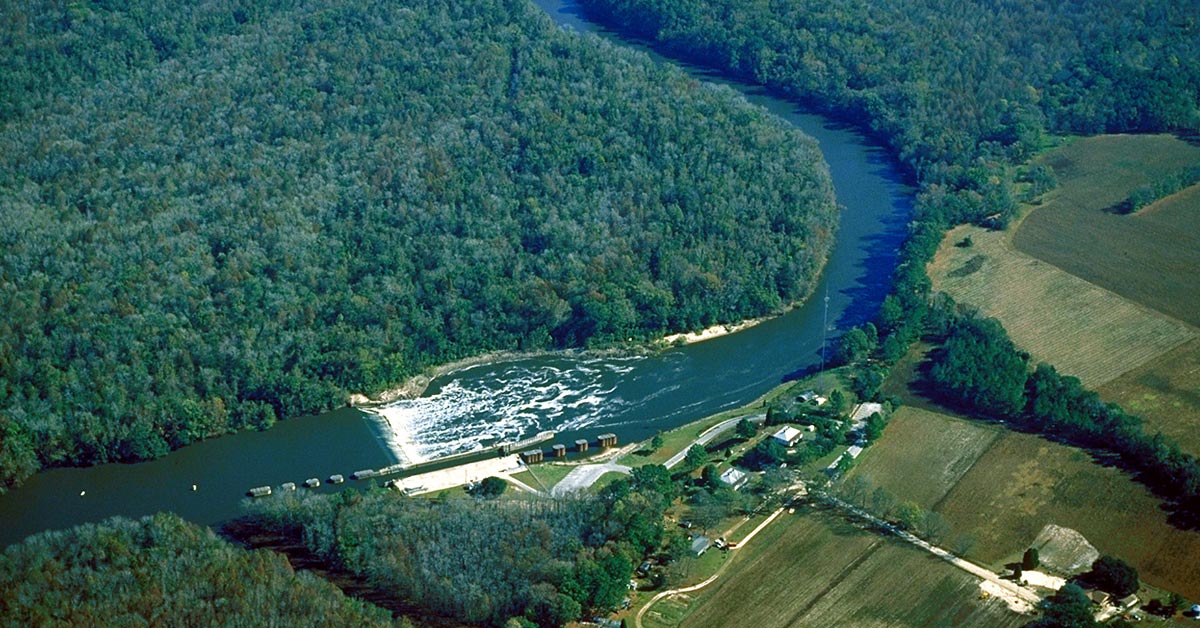
Fayetteville Area
Fayetteville offers several great fishing spots along the Cape Fear River. The Riverside Fishing and Education Center, located at Campbellton Landing, is a fantastic location for anglers of all ages. It features fishing platforms and educational exhibits on local fish species and the river ecosystem. This area is known for its largemouth and striped bass fishing.
Wilmington Area
As the Cape Fear River widens and becomes brackish near Wilmington, the variety of catchable species increases. This area is excellent for fishing for species like red drum, spotted seatrout, and even flounder. River Road Park and the downtown Riverwalk area provide access for bank and kayak fishing.

Cape Fear River Estuary
The Cape Fear River estuary, where the river meets the Atlantic Ocean, is a productive fishery. The mixing of freshwater and saltwater creates a unique environment that supports a variety of species. This area is great for catching red drum, spotted seatrout, flounder, and even the occasional tarpon.
Jordan Lake
While not directly on the Cape Fear River, Jordan Lake is part of the river basin and provides excellent fishing opportunities. This man-made reservoir is known for its largemouth bass and crappie fishing. Several boat ramps and bank fishing areas are available.
Each of these locations offers unique fishing opportunities, and the type of species you are targeting might influence where you decide to fish. It’s always a good idea to check local reports or speak with area guides to get the most current information on what’s biting where.
Fishing Techniques and Tactics
The Cape Fear River Region’s diverse fish species calls for a variety of fishing techniques and tactics. Whether you’re a seasoned angler or a beginner, understanding these techniques will enhance your chances of a successful catch. Here are some methods commonly used in the Cape Fear River:
Bottom Fishing
Bottom fishing is a go-to method for catfish, using bait such as cut bait, chicken livers, or commercial stink baits. This technique involves a baited hook that sinks to the bottom, where catfish typically dwell. A medium to heavy duty rod and reel combo with a line strong enough to pull a big catfish is often employed. Patience is key with bottom fishing, as catfish are known to take their time when deciding to eat.
Casting and Retrieving
Casting and retrieving is a popular method for targeting largemouth and striped bass. This technique uses artificial lures such as spinnerbaits, crankbaits, and soft plastics that imitate the appearance and movement of prey. The lure is cast out and then retrieved, attracting the attention of predatory species.
Fly Fishing
Fly fishing is less common on the Cape Fear River but can be very effective, especially during the shad run. Small, brightly colored flies that imitate the shad’s food sources work well. Fly fishing requires more skill and specialized equipment but can provide a rewarding challenge.
Drifting
Drifting involves letting the current carry your bait downstream, which can be an effective method for catching a variety of species. It allows you to cover a large area and can be especially effective when fishing for shad during their spawning run.
Topwater Fishing
Topwater fishing can be thrilling due to the explosive surface strikes it can provoke. Largemouth bass, in particular, are known to attack topwater lures, such as poppers or walking baits, especially in the early morning or late evening.
Trolling
Trolling, where you drag lures behind a slowly moving boat, can be a successful technique for striped bass. This method covers a lot of water and effectively searches for these roving fish.
Remember, the key to success in fishing lies in understanding the habits of the target species, and being flexible and willing to adapt to different conditions and techniques.
Licenses, Regulations, and Sustainability
A crucial aspect of fishing in the Cape Fear River region involves understanding the local fishing regulations and obtaining the necessary licenses. In addition, it’s essential to practice sustainable fishing techniques to maintain the health of the region’s aquatic ecosystems.
Fishing Licenses
In North Carolina, most anglers aged 16 and older must have a fishing license. Licenses can be obtained online through the North Carolina Wildlife Resources Commission (NCWRC) or at various sporting goods stores throughout the state. There are different types of licenses available, including annual, short-term, and lifetime licenses, and the prices vary depending on whether you are a resident or non-resident.
Fishing Regulations
Fishing regulations in the Cape Fear River region include size limits, bag limits, and specific fishing seasons for various species to protect fish populations and ensure their sustainability. For example, the striped bass has specific slot limits, and only fish between certain sizes can be harvested. Similarly, there are restrictions on the harvest of shad during their spawning season. These regulations are subject to change and can be checked on the NCWRC website.
Sustainability
Practicing sustainable fishing is crucial for preserving the Cape Fear River’s diverse fish populations. This includes respecting fishing regulations, not leaving trash behind, and using fishing techniques that minimize harm to fish. Catch and release, for instance, is encouraged, especially for species like striped bass which have faced population declines in the past.
Catch and release involve using barbless hooks or carefully removing hooks to avoid injuring the fish, handling fish with wet hands to minimize damage to their protective slime coat, and quickly releasing them back into the water.
Habitat Protection
Protecting the habitats of the Cape Fear River is equally vital for sustainable fishing. This means not disturbing vegetation on the riverbanks, being careful not to erode the banks, and respecting designated protected areas.
Adherence to these rules and sustainable practices ensures the Cape Fear River continues to be a thriving ecosystem for fish and a rich source of recreation for future generations of anglers.
Socio-Economic Impact of Fishing
Fishing in the Cape Fear River region has substantial socio-economic implications, ranging from supporting local businesses to fostering cultural heritage and promoting tourism. Here, we explore how fishing contributes to the local economy and society.
Employment and Local Economy
Fishing in the Cape Fear River region is a key contributor to the local economy. The industry supports jobs in various sectors, including retail (fishing gear shops), service (fishing guides and boat rentals), and the hospitality industry (hotels, restaurants, etc.), particularly in towns like Wilmington and Fayetteville.
In addition, commercial fishing in the estuary and the river’s brackish water areas supports local seafood businesses, creating jobs and contributing to the local and state economy.
Tourism and Recreation
Fishing is a significant driver of tourism in the Cape Fear River region. Anglers from across the country visit to enjoy the river’s diverse fish species and beautiful surroundings. This influx of tourists boosts revenue for local businesses and generates tax revenues that support public services.

Moreover, fishing in the Cape Fear River region provides recreational opportunities for residents, promoting physical activity, stress relief, and connection with nature.
Cultural Heritage
Fishing has a deep cultural significance in the Cape Fear River region. Many local traditions and community events revolve around fishing. For example, the annual shad festival in East Arcadia celebrates the spring shad run, a time-honored marker of the change of seasons.
Fishing also provides a way for knowledge and traditions to be passed down through generations, helping to strengthen community ties and preserve cultural heritage.
Environmental Awareness
Fishing promotes environmental awareness and stewardship. As people engage in fishing, they often become more aware of the need to protect aquatic ecosystems, leading to increased support for conservation efforts.
In conclusion, fishing in the Cape Fear River region is more than just a leisure activity. It is a significant economic engine, a driver of tourism, a preserver of cultural heritage, and a promoter of environmental awareness. As such, sustainable fishing practices are vital to maintaining these benefits for future generations.
Final Thoughts
The Cape Fear River region is a dynamic ecosystem that supports a wide variety of fish species, offering both recreational and commercial fishing opportunities. However, the most important takeaway from this guide should be the significance of sustainable fishing practices.
Respecting fishing regulations, adhering to catch limits, and practicing catch and release can help maintain the health and diversity of the river’s fish populations. This is not just essential for preserving the joy and challenge of fishing for future generations, but it’s also critical for the ecological balance of the Cape Fear River region.
Resources
- North Carolina Wildlife Resources Commission: ncwildlife.org
- Cape Fear River Watch: capefearriverwatch.org
- Local Fishing Reports: Websites such as cbfishing.com and wbfishing.com
